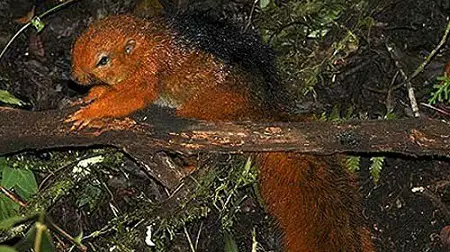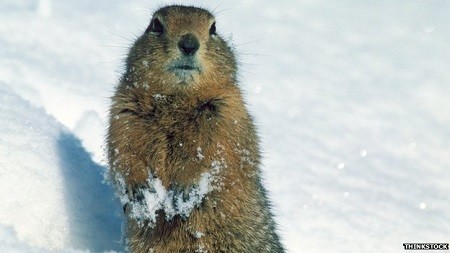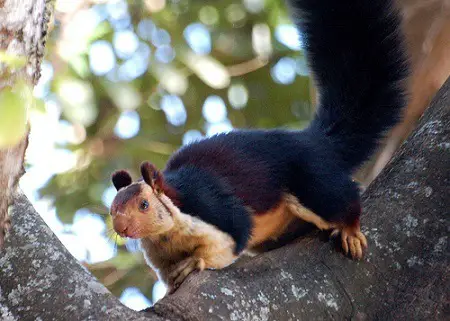As an Amazon Associate I earn from qualifying purchases.
There are many types of squirrels, and each has their housing preferences. From hidey-holes in the treetops, elaborate camouflage in the foliage, to underground kingdoms, squirrel homes run the gambit of the rodent real estate.
Nests In Someone Else’s Nest
Unfortunately, a squirrel will sometimes make its home in a place where it isn’t welcome, such as an attic or in a wall of a home. Poop, chewing, and all sorts of possible problems can arise when a squirrel takes up residence in a human habitat.
There are several ways to remedy the problem—some more humane than others—but certainly be aware that, if female, the squirrel most likely has built the nest in preparation for a litter. If this is the case, whether or not the squirrel has given birth yet may determine the best method by which to remove the squirrel. No one wants unaccompanied babies left in an attic or wall. Without care, they will certainly die within days. If in doubt, always contact your local experts for advice.
Homes In The Wild
Hopefully, a squirrel finds a safe and secure location in which to build its home and bear its young. The methods and styles of nests somewhat varied, but they have clear similarities as well. The main types of nests can be divided into ground or tree squirrels.
From there, each type of squirrel will build according to their needs, with the size of the squirrel and the habitat in which they will build making for slight variations in style of nest.
The following are just a few examples, but from smallest to largest or most temperate to freezing, squirrels have more in common than different.
African Pygmy Squirrel

The smallest type of squirrel in the world, the African pygmy squirrel measures only six centimeters long from head to rump with an additional one to two extra for a tail. The African pygmy squirrel lives in the trees though they prefer the lower levels of the forest rather than the highest branches.
As a tree squirrel, the African Pygmy Squirrel constructs nests from leaves among the branches of the trees.
Arctic Squirrel

The Arctic squirrel is a ground squirrel. It hibernates during the coldest Alaskan months in an extensive series of tunnels about three feet underground. The Arctic squirrel lives in large colonies of hundreds with burrows connected by more tunnels. They prefer bushy meadows and sandbanks to the forests of their relatives.
Red Squirrel

Red squirrels are tree squirrels through and through. They primarily eat pine tree seeds, but if the pine seeds are scarce, the red squirrel will eat mushrooms, insects, bird eggs, sap, or bark among other things. Their diet remains varied in the case of one food shortage or another.
As tree squirrels, red squirrels either build their nests or find a hole among the trees. They collect leaves and sticks, secure and strengthen the structure while also camouflaging it, and then line the interior with softer material. Grass and moss are excellent for comfort and warmth. If available, they take will over an existing tree cavity or pre-built nest.
Thirteen-Lined Ground Squirrel

The thirteen-lined ground squirrel makes their home in the burrow. Though not as complex as the Arctic squirrel communities, thirteen-lined ground squirrels also live in communities.
Their homes are underground like other ground squirrels. They usually tunnel two exits, each about two or three inches wide to allow for their comfortable passing but maybe not that of a larger predator. Not nearly as expansive as the Arctic squirrel burrow, it is still far more impressive on the inside than the tiny exit holes suggest. The thirteen-lined ground squirrels have been known to create burrows up to 200 feet long.
Flying Squirrel
Another type of tree squirrel, the flying squirrel distinguishes itself by having skin that connects its arms to its legs and body, allowing for a long, gentle glide of up to 150 feet when expanded. The flying squirrel also makes its home in the trees, the higher, the better.
Like other tree squirrels, an available nest or tree cavity is an ideal option as the work saved by not having to build a home can be redirected towards food collection and storage. If a new home is needed, however, a flying squirrel nest will require leaves, twigs, or paper—anything that will provide stability and structure—and then bedding in the form of grass or moss.
Sometimes referred to as a drey, the flying squirrel home may appear as nothing more than a clump of leaves, but within, the nest is soft, secure and warm.
Indian Giant Squirrel

The Indian giant squirrel holds the current title as the world’s largest type of squirrel, measuring up to twenty-five to fifty centimeters long. This nimble squirrel is not limited by size. It lives in the treetops, jumping over to six meters in a single bound.
As a tree squirrel, the Indian giant squirrel also makes its home in the trees. Similar to the red and flying squirrels in that it can make its home in an existing tree cavity if the opening is large enough, the Indian giant may build multiple, round or globe-shaped nests among the branches. They rarely leave the canopy, preferring to leap among the branches.
All Of The Above
Regardless of the differences between the many types of squirrels, one significant similarity is that they all bear their young in their nests. For the female squirrel, the nest is not simply a place to sleep or winter, but will be the nursery for the first three to four months of her litter’s birth. The nest must be secure and warm, but also protected and camouflaged from predators.
Since these nests are typically underground or in the trees, they must appear as innocuous piles of dirt or a gathering of leaves in a tree. From the outside, neither version of nest suggests the warm and protected shelter within.
Amazon and the Amazon logo are trademarks of Amazon.com, Inc, or its affiliates.


